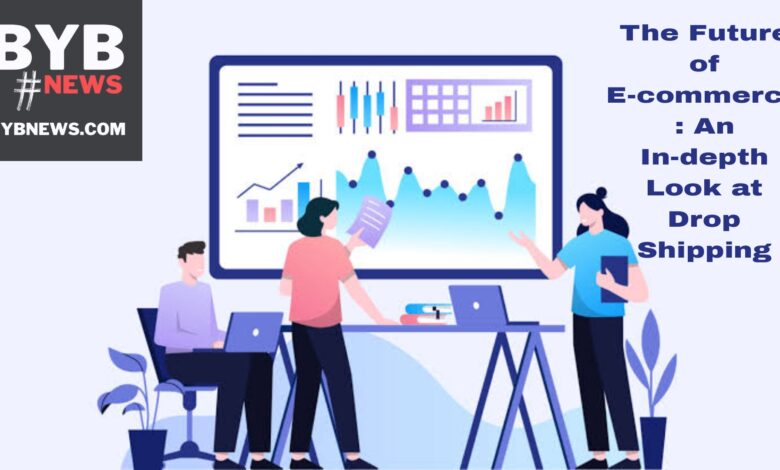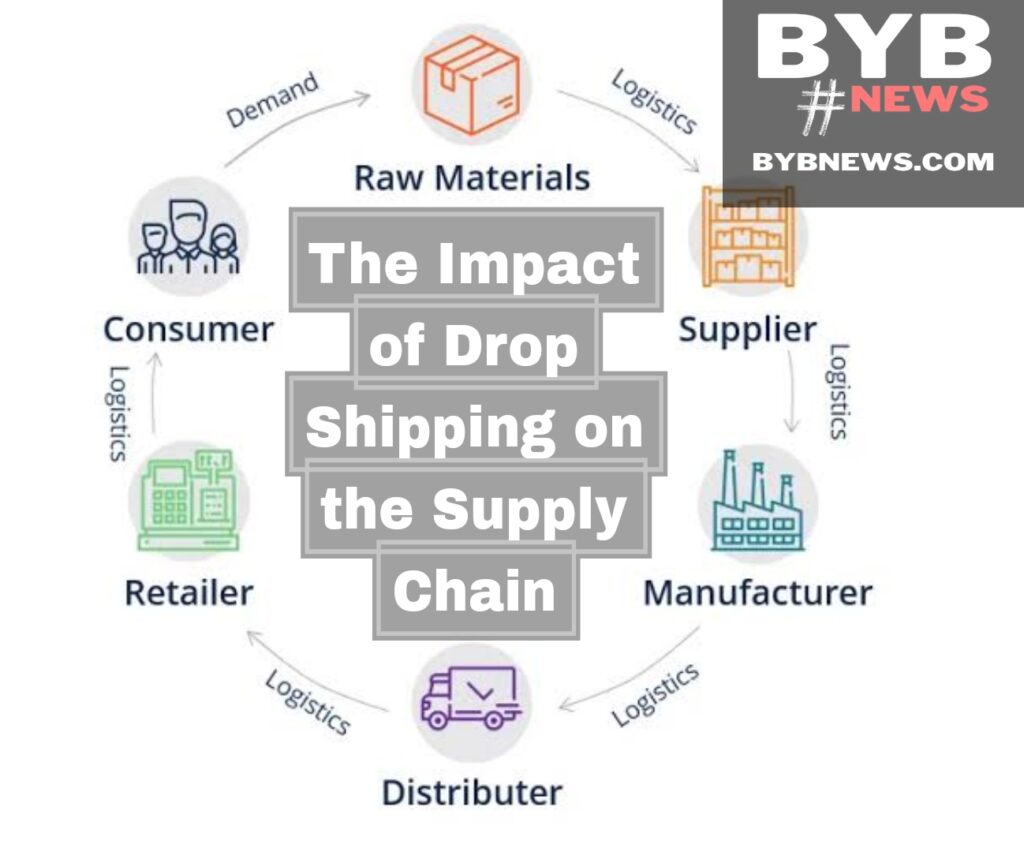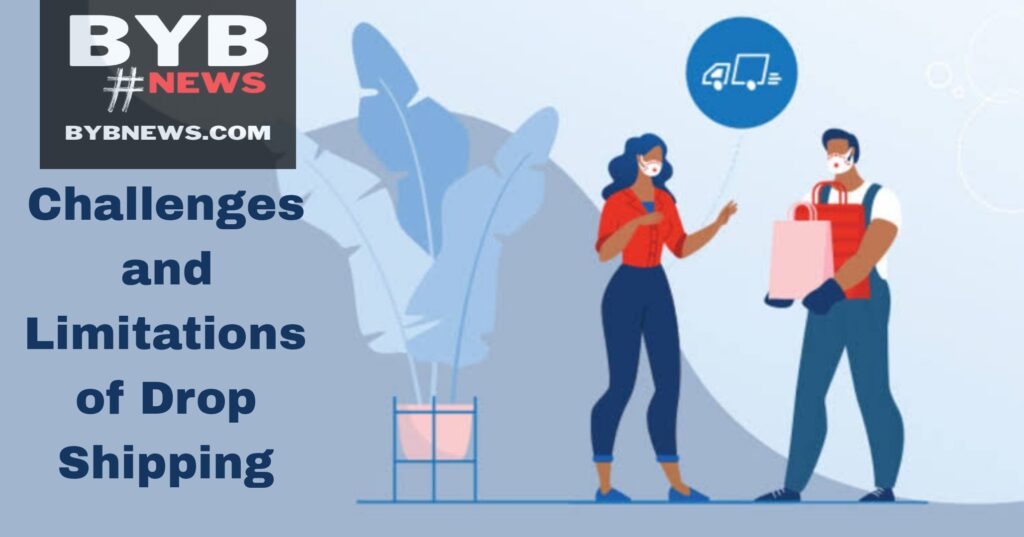The future of e-commerce: the best is drop shipping with 5 challenges
Understanding the Advantages, Challenges and Potential of the Drop Shipping Business Model for Online Retailers

E-commerce is continuously changing, and businesses looking to stay competitive need to keep up with the latest trends and technologies. Drop shipping, a business model where retailers sell products without holding inventory, has become a significant development in recent years. In this article, we’ll explore how drop shipping is shaping the future of e-commerce.
Understanding Drop Shipping
Table of Contents
DTC shipping is a fulfillment method in which a retailer partners with a supplier or manufacturer. The supplier ships products directly to the customer, and the retailer does not hold inventory or worry about warehousing and shipping costs. Instead, the retailer focuses on marketing and customer service while the supplier handles logistics. This model allows retailers to test new products or expand their product lines without significant costs.
The Rise of Drop Shipping
Drop shipping has grown in popularity due to several factors, including the increasing popularity of e-commerce, the growing number of suppliers and manufacturers willing to work with retailers, and the development of software and platforms that make it easy for retailers and suppliers to connect.
Platforms such as Alibaba and Oberlo allow retailers to find suppliers, import products into their online stores, and manage orders and fulfillment. According to a study by eMarketer, global B2C e-commerce sales are projected to reach $4.88 trillion by 2024, and this growth is expected to drive the adoption of DTC shipping as a fulfillment method.
Additionally, DTC shipping has become more popular due to the low barrier to entry, allowing almost anyone to start an online store with minimal investment.
We advise you to read: Top 20 Dropshipping Websites for 2022
Benefits for Retailers
One of the main benefits of DTC shipping for retailers is the ability to offer a wide range of products to customers. Traditional brick-and-mortar stores are limited by the amount of space to store inventory, but with drop shipping, retailers can offer an almost unlimited number of products, giving them a competitive edge in the market. Additionally, DTC shipping allows retailers to easily expand into new markets and test new products without incurring significant costs. A survey by Shopify found that retailers who used drop shipping reported an average increase in sales of 49%.
Benefits for Customers
Drop shipping also offers several benefits to customers, including the ability to find unique and hard-to-find products. Because retailers can work with a wide range of suppliers, customers have access to a wider selection of products than they would find in a traditional brick-and-mortar store. Additionally, drop shipping offers customers a more personalized experience, allowing retailers to provide more accurate recommendations and personalized support.
The Impact of Drop Shipping on the Supply Chain
Drop shipping also has a significant impact on the supply chain. With traditional retail models, suppliers would need to hold inventory and ship products to retailers. However, with drop shipping, suppliers only need to hold inventory for orders that have already been placed by the customer. This allows suppliers to reduce their inventory costs and focus on production and fulfillment.
Additionally, drop shipping allows suppliers to expand their customer base, reaching a global market through online retailers. According to a report by McKinsey, drop shipping can reduce inventory costs for suppliers by up to 30%.
The Future of Drop Shipping
As e-commerce continues to grow and more businesses adopt the drop shipping model, we can expect to see more innovation and advancements in the field. For example, Artificial intelligence, machine learning, and data analytics will enable retailers and suppliers to improve the process of order fulfillment and logistics.
These technologies can help suppliers and retailers to forecast demand, optimize their inventory, and improve the accuracy of delivery times. Additionally, developments in logistics, such as drones and autonomous vehicles, may be used to deliver goods directly to customers, making the process faster and more efficient.
Challenges and Limitations of Drop Shipping
Despite its many advantages, DTC shipping also comes with some challenges and limitations. One of the biggest challenges is managing the relationship between the retailer and supplier. Retailers need to find reliable and trustworthy suppliers, and there is a risk that the supplier may run out of stock or not be able to fulfill orders on time.
Additionally, retailers have less control over product quality and shipping times, which can affect customer satisfaction. To mitigate these risks, retailers should thoroughly research suppliers and establish clear communication and expectations.
Another limitation of DTC shipping is the potential for increased competition. As more retailers adopt the drop shipping model, the market becomes increasingly saturated, making it harder for retailers to stand out. Retailers can overcome this limitation by offering unique and high-quality products, providing excellent customer service, and building a strong brand.
In conclusion, drop shipping is shaping the future of e-commerce by providing retailers with the ability to offer a wide range of products without significant costs, and customers with access to unique and personalized products. However, retailers need to be aware of the challenges and limitations and take steps to mitigate them. As e-commerce continues to evolve, we can expect to see even more innovation and advancements in the drop shipping industry.









You must be logged in to post a comment.